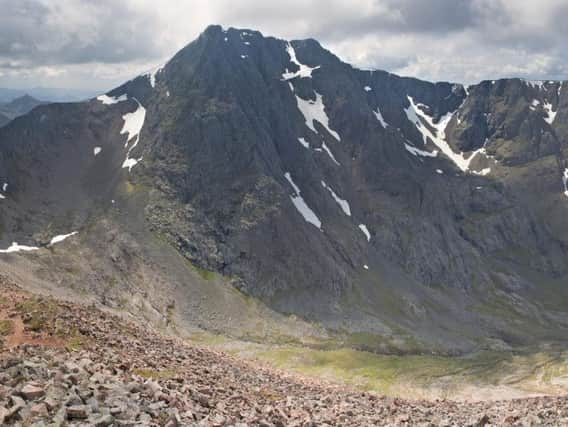Pilot and passenger died while taking a shortcut in light aircraft after Ben Nevis climb


Pilot Tony Woodward, 62, had deviated off his flight plan when their plane crashed into sea in fog in 40m visibility.
He and Robert Archer, 57, were descending at 500 feet per minute when they died on impact off Skipness, on the Kintyre peninsula, on 25 May 2017.
Advertisement
Hide AdAdvertisement
Hide AdThe pair had flown from Carlisle Lake District Airport to Oban five days earlier and completed an ascent of Ben Nevis for charity with pal Peter Ogilvie.
Mr Ogilvie had written about their nine-and-a-half-hour climb, saying the team were "hugely proud" of their achievement to raise more than £2,000 for the Shooting Star Chase children's charity.
The inquest into the death of passenger Mr Archer, from Romford, Essex, heard Mr Woodward was not qualified to fly in the poor visibility conditions.
Concluding Mr Archer's death was "accidental", Area coroner Graeme Irving said: "The evidence points to the presence of low stratus clouds or fog south of Lochgilphead.
"It's likely that the visibility had reduced from the limit of 1,500m which is required in the visual flight rules minimal and as such the aircraft was being flown in IMC (instrument only) circumstances."
He said the pilot had undergone 12.5 hours of 'instrument flying' training but added: "However he was not qualified and had not completed the required training to fly unsupervised in IMC conditions."
Floating wreckage and the bodies of the two men were later recovered from the sea. There were no lifejackets on the plane.
The friends had been due to fly back to Carlisle the day before but the weather conditions were not deemed to be suitable after checking the weather on an unknown app on the pilot's mobile phone.
Advertisement
Hide AdAdvertisement
Hide AdWalthamstow Coroners Court in east London heard Mr Woodward used a short cut to his original flight plan on both legs of the journey.
The coroner said: "The route would have shortened the journey by around ten minutes."
It avoided him having to climb over hills, but the coroner added: "However the route would have taken him towards an area of low visibility.
"The surface of the water would have been relatively calm and would have been difficult for the pilot to check height."
During the return flight to Carlisle, air traffic controllers raised the alarm after communication with the chartered Piper PA-28 Cherokee aircraft stopped.
Radar data captured the aircraft's rapid descent moments before the crash killed both men on impact.
Referring to an Air Accidents Investigation Branch report into the crash, Mr Irving said: "The radar showed that the aeroplane was, at 10:42 hours and 41 seconds, at a height of 1,050ft and then flew 15 nautical miles."
The plane dropped 300ft in the next ten minutes and: "During the next 4.9 nautical miles there was an increase in the rate of descent which was estimated to be approximately 500 feet a minute for the rest of the flight."
Advertisement
Hide AdAdvertisement
Hide AdThe plane was moving at around 130 knots and the coroner said: "It seems to me there was no significant reduction in air speed during the final minutes of the flight of this aircraft.
"A helicopter search located wreckage at 14:40 hours and then in a few minutes sighted a casualty in the water.
"The casualty who was recovered by winch had sustained fatal injuries. The second casualty had also sustained fatal injuries and was recovered by a RNLI lifeboat."
The report noted that two ferries operating in the vicinity of the accident site suspended services that day due to poor visibility.
The coroner said: "There was poor visibility as a result of cloud and fog on the day in question.
"References made within the meteorological report that a nearby ferry suspended its service at 1040 hours stating that fog filled in again at 40m visibility."
A post mortem gave Mr Archer's cause of death as "multiple injuries" with a second cause of "aircraft crash".
No members of his family attended the inquest.